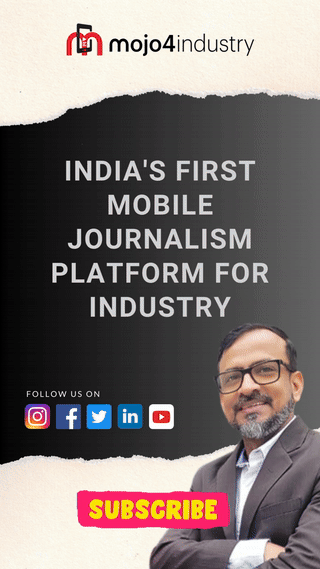Schneider Electric aims 20% CAGR in Transportation and Mobility business
Schneider Electric, the global major in the digital transformation of energy management and automation, is expanding its footprint in advanced transportation and mobility. In an exclusive interview with mojo4industry, Ashutosh Shukla, Director – Transportation & Mobility, Schneider Electric India shares an overview of the company’s transportation and mobility business and his future roadmap.
Could you briefly tell us about the company’s growing capabilities in the field of smart infrastructure including transportation and mobility?
We want to run basically for smart programs which will make airports or metros future ready and which will improve their efficiency and overall performance. Today when we look at the infrastructure projects (like metros and airports), there are individual discrete systems, which are operating in silos. The biggest challenge for these operators is to put everything together on a common platform that basically improves the overall efficiency of the system and operational excellence.
The second area where we are running our program is facility and energy management. Today, whether it is airports or metros, they are energy guzzlers. We can help them manage their energy better. The third thing we are talking about is the process optimization. We are also working on sustainability. Today, at any airport, everyone is having the sustainability goals. We are working on reducing the energy consumption there.
With metros, airports and other projects are coming up, we expect huge demand for solutions from Schneider Electric. We foresee a CAGR of at least 20% in the next 4-5 years in Transportation and Mobility segment.
As you anticipate a growth of 20% CAGR, what is the estimated size of the transportation and mobility business segment in India?
The potential market size of transportation segment for our prospective products is close to Rs1,000 crore per year.
What are the key challenges for the sector and the industry specifically?
For every sector, the first major challenge comes into play when there are plans for expansion as funding is a huge hurdle. Funds are required to initiate and maintain any project and to keep it going is a herculean task. The second hurdle is land acquisition which is definitely a challenge in the country. The litigations and it is never easy to acquire land here. The uncertainty in the revenue streams is another major hurdle. Today we all know the number of projects like metros and airports that have been closed for a long time now. The PPP model has not been very successful in the metro projects so far, because any private investor will look at the return on investment. So, managing the overall sustainability of the project is the major challenge. However, if we look at the airport segment, the situation is very different today, there are many global players putting lots of investment in the country.
What sort of solutions you have to make a project viable?
To make any project viable, we have to make it more efficient – efficiency of operations is very critical. Secondly, when we speak about sustainability, we also talk about solutions like micro grid, wherein their dependence on the utility grids comes down heavily. We need to look at how can they invest in the renewable sources of energy that will help them reduce their overall consumption as well as make them more green in terms of their Sustainability Index. Our IoT system architecture EcoStruxure helps optimise energy consumption by using smart energy management solutions, integrating renewables, and braking energy recovery.
Also, at airports, there are building management system, baggage handling system, access controls, lighting controls, and many subsystems. Schneider Electric has a role to play in each of these operational technologies.
Would you like to mention some of the airports and metros where your solutions like eco structure are being used?
If I talk about in India, the concept of digital airports is still new. However, in metros, we have been working since 2004 with the Delhi Metro.
What are the five key objectives you aim to achieve in the next five years as far as Schneider Electric’s transportation & mobility segment is concerned? We would like to position software first – we want to be more digital. We want to give more greener products to the customers, which will help them make more sustainable. We want to make customers operational efficiencies is much better than what they have today. Also, we want to invest heavily in those specifications of the customers so that there’s a clear roadmap for the customer to see in front of them. And finally, we want to grow our company. We need more system integrators, more partners to join us to make a community which can give a very strong integrated solution to the customers.







